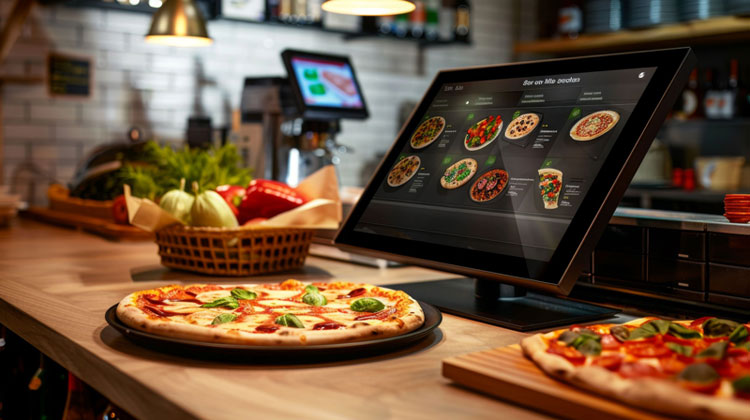The pizza industry is one of the most competitive and lucrative sectors in the food and beverage market. With millions of pizzas consumed daily worldwide, starting and running a profitable pizza business requires more than a great recipe. Success typically depends on high-quality ingredients, efficient operations, and strategic business practices, including a good business plan.

Below are the top ingredients for building a profitable pizza business.
High-Quality Ingredients
The foundation of any successful pizza business is the quality of its ingredients. Customers can easily distinguish between a pizza made with fresh, premium ingredients and one made with subpar components. Some key ingredients like dough, cheese, sauce, and toppings must be carefully sourced to ensure consistency and flavor.
For instance, using fresh mozzarella instead of processed cheese can elevate the taste and texture of the pizza. Similarly, San Marzano tomatoes for the sauce or locally sourced vegetables for toppings can set a pizza apart from competitors. Investing in high-quality ingredients may increase costs initially, but it pays off in customer satisfaction and repeat business.
Efficient Operations
Efficiency is critical in the fast-paced pizza industry. Streamlining operations ensures that orders are prepared quickly and accurately, reducing wait times and improving customer satisfaction. One way to achieve this is by implementing a POS system for pizza delivery. Such systems can help manage orders, track inventory, and streamline delivery processes, making it easier to handle high orders during peak hours.
Efficient operations can also extend to kitchen layout and staff training. A well-organized kitchen can minimize movement and maximize productivity, while well-trained staff can handle orders with precision and speed.

Strategic Location
Location plays a pivotal role in the success of a pizza business. A prime location with high foot traffic, easy accessibility, and proximity to residential areas can significantly boost pizza sales. For delivery-focused businesses, being centrally located ensures faster delivery times and lower transportation costs.
Moreover, understanding the demographics of the area is crucial. For example, a location near colleges or offices may benefit from offering lunch specials or student discounts, while a family-oriented neighborhood might prioritize larger, shareable pizzas.
Diverse Menu Options
While pizza is the star of the show, offering a diverse menu can attract a wider customer base for a pizza restaurant. For instance, including options like gluten-free crusts, vegan cheese, and various toppings caters to different dietary preferences and restrictions. Appetizers, salads, desserts, and beverages can also increase the average order value.
Furthermore, seasonal specials and limited-time offers can keep the menu fresh and exciting, encouraging customers to return and try new items.
Effective Marketing Strategies
Marketing is essential for building brand awareness and driving sales. Leveraging social media platforms like Instagram, Facebook, and TikTok and other marketing channels can help showcase mouthwatering pizza visuals and engage with customers. Online reviews and testimonials can also play a significant role in attracting new customers and boosting online presence.
Additionally, loyalty programs, discounts, and promotions as part of consistent marketing can incentivize repeat business. For example, offering a free pizza after a certain number of purchases or providing discounts for first-time online orders as part of the marketing activities can boost customer retention and acquisition.
Reliable Delivery Service
Today, delivery is a cornerstone of the pizza business. Customers expect their pizzas to arrive hot, fresh, and on time. As such, investing in a reliable delivery system, whether through in-house drivers or third-party services, is crucial.
Using technology to optimize delivery routes and track orders in real-time can also enhance efficiency. Additionally, ensuring that delivery packaging maintains the pizza’s temperature and presentation is vital for customer satisfaction.
Exceptional Customer Service
Customer service can make or break a pizza business. For example, friendly, attentive, and knowledgeable staff can create a positive dining experience, whether in-store or over the phone. Handling complaints gracefully and resolving issues promptly can also turn a dissatisfied customer into a loyal one.
Moreover, training staff to upsell menu items or suggest add-ons can increase revenue. For instance, recommending a side of garlic bread or a dessert can enhance the customer’s meal and boost the business’s bottom line.
Financial Management
Effective financial management is the backbone of any profitable business. Keeping track of expenses, including the labor cost, revenue, and profit margins ensures long-term sustainability. By regularly reviewing financial statements, a pizza business can help identify areas for cost-cutting or investment.
For instance, negotiating better rates with suppliers or reducing food waste can improve profitability. Additionally, reinvesting profits in marketing, equipment upgrades, or staff training can drive growth.
Technology Integration
Incorporating technology into the business model can streamline operations and enhance the customer experience. Online ordering systems, mobile apps, and customer loyalty programs can make it easier for customers to place orders and track deliveries.
On the other hand, a robust POS system for pizza delivery can help manage transactions and provide valuable insights into sales trends, customer feedback, customer preferences, and inventory levels. This data can inform strategic decisions, such as which menu items to promote or which ingredients to stock in larger quantities.
Community Engagement
Building a strong connection with the local community can foster brand loyalty and attract new customers. A pizza business can increase visibility and goodwill by sponsoring local events, participating in fundraisers, or collaborating with nearby businesses.
Also, offering discounts to local schools, sports teams, or first responders can create a positive reputation. Lastly, engaging with the community shows that the business values its customers beyond just transactions.
Final Thoughts
Running a profitable pizza business requires a combination of high-quality ingredients, efficient operations, and strategic planning. By keeping the information mentioned above in mind, a pizza business can thrive in a competitive market. With the right mix of these elements, any pizza business can rise to the top and become a favorite among pizza lovers.























